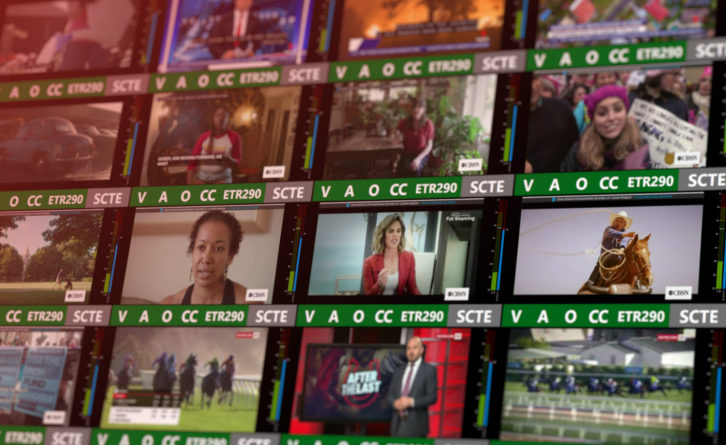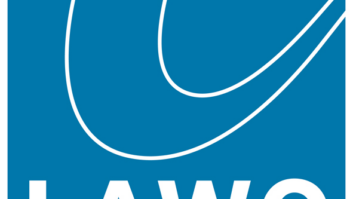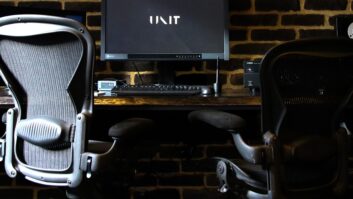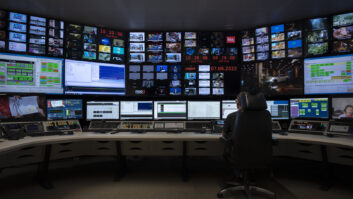Technologies can be around for some time but only come into their own due to specific circumstances or to meet a particular requirement. For broadcasters, both remote production and working from home (WFH) have become essential tools in enabling services to continue nearly as normal during the coronavirus crisis.
While the focus has been on outside broadcasts (OBs) being able to take place with smaller crew numbers or presenters and guests keeping safe by broadcasting from their homes, attention behind the scenes has also turned to how the incoming feeds, as well as the outgoing streams for distribution, are monitored and analysed for compliance purposes.
Over the last five years, Mediaproxy has seen interest grow in the potential of remote working, particularly for coverage of news and sporting events. The appeal of this type of operation was further enhanced by the promise of 5G, which is regarded as allowing news crews to work and sports and other live productions to be staged without the need for a satellite vehicle or fibre connection.
To be clear, even though the two terms are now often used interchangeably, remote production and WFH are not the same thing. Remote production is applied to situations where many jobs – including sound and vision mixing – are under the direct control of the main studio gallery back at the broadcast centre. The crew on site tends to comprise only a few people, usually a camera operator, perhaps an assistant, a producer and the reporter/presenter/commentator.
WFH is something that had been more widely used in radio prior to Covid-19. Big name presenters who lived a long way from the radio station created their own facilities at home, linking in over ISDN and, more recently, IP connections. This became much more widely exploited once the pandemic struck and extended into television, with presenters and contributors appearing via Zoom, Skype for Broadcast or other links.
The two techniques can be used together, which does blur the line between them. There is also a distinct and less publicised element of WFH where engineers, technicians and broadcast company executives are able to connect with the central systems at headquarters. This enables them to see what is going on remotely and also gives the opportunity to monitor and control functions in the master control room (MCR) through a web browser interface.
This enables the MCR operator or chief engineer working from home on a laptop to access low resolution proxy media, which can be managed even on lower speed internet connections. In this way it is possible to maintain orchestration of the broadcast quality media from a remote location. Mediaproxy has been able to offer its users, which include leading broadcast networks, streaming service operators and facilities, the flexibility to perform quality control (QC) and compliance monitoring away from the main MCR or network operations centre (NOC).
By mirroring the Mediaproxy LogServer logging and analysis systems at the MCR/NOC in the homes of technical operators, it is possible to maintain the same level of checking and audience experience. Through low latency links, technicians can monitor outgoing streams using exception-based monitoring on Mediaproxy’s interactive Monwall multiviewer.

This set-up allows airchecks to be performed by utilising intuitive web interfaces. Web pages and browsers have become more interactive and easier to navigate, which makes it easier for operators to call up different sources and enables them to concentrate on their job rather than the way they do it.
Such a set-up can be further extended to the editing of promos and other content for various processes. New workflows are also emerging where customers are not only recording transmission feeds but also clean internal router sources. These are recorded at re-broadcastable quality. This media is then used to provide news editors with options to re-edit and extract frame accurate sub-clips that are then pushed into an automated workflow at the facility for further processing or direct publishing to websites or social media platforms.
Customers are continuing to discover new options to extend the use of their existing compliance recording system, such as that featured as part of Mediaproxy’s LogServer. These systems are able to have access not only to a broadcaster’s entire transmitted archive – going back weeks or months – they can also provide access to live content. In the latter case, having full monitoring and analysis capability is essential to ensure the live transmission comply with the relevant broadcast quality standards.
LogServer functionality can also be extended or customised through its APIs (application programming interfaces). In this way it is possible to integrate the logging platform with other parts of the broadcast workflow, such as the newsroom control or computer system (NRCS). This would enable fast turnaround news items can be streamed through LogServer via an API, creating full integration with the broadcaster’s NRCS or other workflows.
Remote operation of compliance systems should not only be thought of in terms of connecting over long distances. The need for social distancing means that, even with broadcasters installing Perspex dividers into control rooms and all staff wearing masks, an even more sensible approach can be to have some operators in different parts of the broadcast centre. Sub-monitoring areas can be established and connected either over the building’s internal network or wireless broadband.
The changes in how television programmes are produced brought about by the Covid-19 pandemic are leading broadcasters to use technologies in new and different ways. Many broadcast organisations were already considering remote workflows but now they are a necessity, not only to keep networks running but also for ensuring that the output continues to meet the highest standards. Mediaproxy already has technologies such as LogServer and Monwall that can easily integrate into remotely controlled operations. We will continue to develop these capabilities to allow our customers to react to any further business disruption and, ultimately, create more efficient ways of working.







